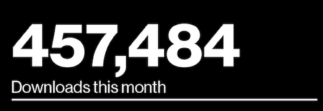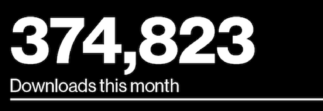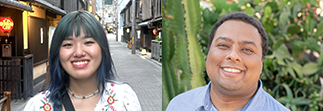Leaders from three chemistry societies came to MIT during International Open Access Week to speak about their open access options for authors and their plans to provide more open access to the articles they publish. The panel, moderated by Steve Gass, Interim Director of Libraries, included Professor of Chemistry Christopher (Kit) Cummins, as well as representatives from the American Chemical Society (ACS), the Electrochemical Society (ECS), and the Royal Society of Chemistry (RSC).
MIT Professor Kit Cummins’ comments underlined the problem authors want solved: “I would like my papers to be available to anyone who stumbles across them and wants to read them.” Cummins spoke compellingly of readers locked out, such as the “science teacher, the founder of a start-up – uses you hadn’t envisioned, that are enabled by open access.”
“The vast majority of my papers are locked behind paywalls,” said Cummins. “My heart just bleeds for those papers.” He doesn’t think he’ll ever have the funds to unlock the papers, even though the results they contain will be “equally valid 100 years from now.”

Pictured above, L to R from top: Professor Christopher Cummins; Jennifer Griffiths, RSC; Mary Yess, ECS; Kevin Davies, ACS
Fortunately, “the societies are doing a good job of figuring out how to offer open access,” he said. The society representatives, in what the moderator Steve Gass jokingly called a “speed dating” format, explained just what they are doing about offering open access in this evolving arena.
Mary Yess, Deputy Executive Director and Chief Content Officer & Publisher at the ECS, reported that in May 2013, the ECS committed to an open access plan that addresses the ECS’ concern that open access not simply “shift the burden” from page charges to open access article processing fees.
*As of early this year, all four of their journals have an open access option. This option is currently free for MIT authors.
*ECS has pledged to be free of all author fees and subscription fees within a decade.
Jennifer Griffiths, Editorial Development Manager for North America at the RSC, emphasized that the RSC offers open access options for authors through RSC journals, but also through a new open access repository – the Chemical Sciences Article Repository — which houses manuscripts from RSC and other publishers, and data as well. Griffiths described other details of the open access program, including:
-
*Offering the “gold for gold” vouchers program where authors whose campus libraries have purchased the full RSC journals package – as at MIT—can request a voucher that will allow for open access publication of their article free of charge.
*Switching their flagship journal, Chemical Science, to open access as of 2015, a move that was supported by Professor Cummins in his role as Associate Editor for the journal. There will be no author fees for at least two years.
Kevin Davies, VP of business development at the American Chemical Society, reflected wryly that the ACS is not exactly known as being one of the “leading evangelists in open access,” in part because they have not heard their authors clamoring for it, but noted that the success of the open access model has become clear, manifested in the dramatic growth of journals such as PLoS One. As a society publisher, Davies said the ACS felt a responsibility to the chemistry community to offer the appropriate menu of publishing models sought by authors and/or necessitated by funders’ mandates.
The ACS’s current open access strategy includes “four pillars”:
-
*A new multidisciplinary journal, ACS Central Science, edited by HHMI and UC Berkeley chemical biologist Carolyn Bertozzi, which will launch in January 2015 and “aim high.”
*ACS Author Rewards, through which corresponding authors can apply credits gained by publishing articles with ACS towards open access fees.
*ACS Author Choice, a paid open access option.
*ACS Editor’s Choice, through which one article per day, chosen by editors, is made openly available at the ACS site.
The audience probed about peer review mechanisms, drawn to the modified model offered by PLoS One – which Davies described as comparable to an ice skating competition where everyone agrees to skip evaluating “artistic impression” and just focus on the “technical merit” — whether the skater has “landed the jump.”
Others asked whether “open access goes far enough,” wondering about open access to original data and the complete methods section, so the work can be reproduced. Government mandates are beginning to require open access to the data, but as Griffiths of the RSC pointed out, open access to data is a “much more difficult problem” than for publications. Cummins noted that Xray crystallography data is submitted to a particular database that has evolved increased standardization of data formats, improving access as well as fraud detection. Journals are now also supporting access to data by allowing authors to submit a supporting information document with spectra included. ACS affirmed that they make all such documents open access; ECS allows posting of these materials.
Cummins reflected that “we are in a transitional period in scientific publishing,” while Mary Yess of the ECS reinforced the same point, saying that “the models of scientific communication and publication—which have served us so well for so long—are no longer fully meeting the spirit of our mission, may not be financially viable, and are hurting the dissemination of the results of scientific research.”
During this lively session, the panelists agreed that the time has come to provide more open access to chemistry, and that the societies have a special role to play in this shift. As Griffiths said about the RSC open access options, “We are doing this because we are a society.” From the author perspective, Cummins cut to the chase: “I want my work to be read by anybody.”
For more information about the open access options described here, contact:
Ellen Finnie Duranceau / Program Manager, Scholarly Publishing, Copyright, & Licensing, MIT Libraries / x38483 or
Erja Kajosalo, Chemistry and Chemical Engineering Librarian, x39795.


